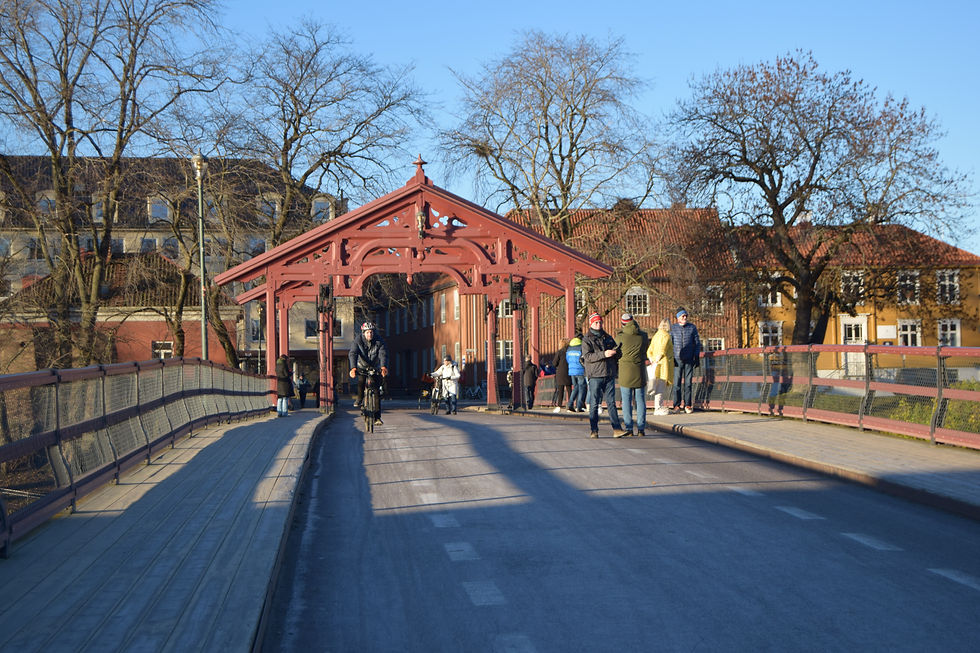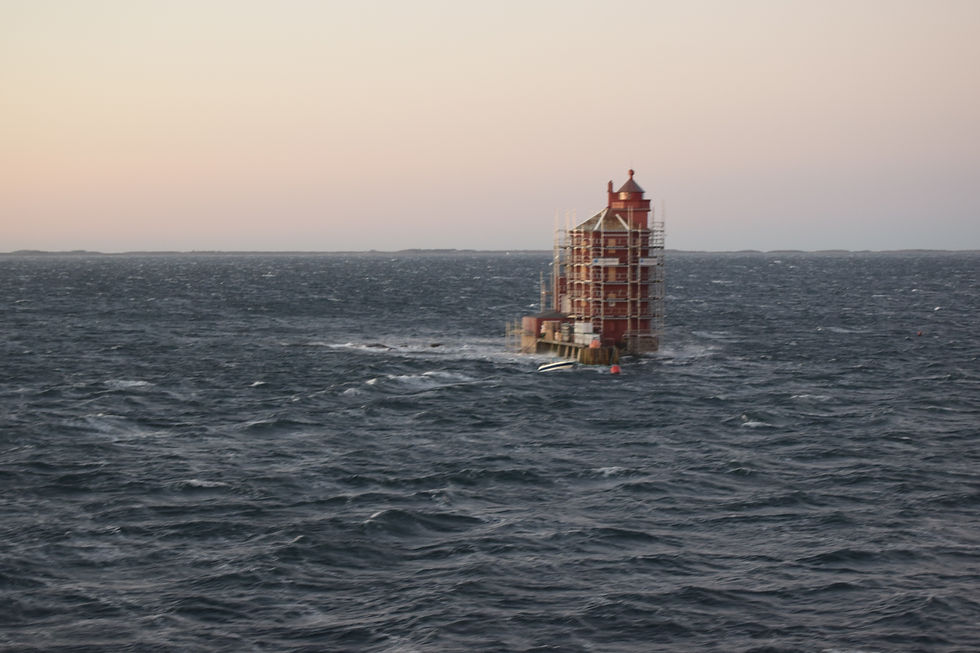Day 03 - A Fancy Cathedral Front, Colourful Wharf Buildings and A Bike Lift....
- SElliott

- May 4, 2023
- 3 min read
Today we woke up and were sitting down for breakfast as the ship was travelling through Trondheim’s Fjord, this is the third longest fjord in Norway.

Picture 1 - Sailing through Trondheim’s Fjord
On the way into Trondheim we passed Munkholmen. This small islet is now a place for bathing and leisure but in the past it was home to a monastery (in the Middle Ages) and a military fort (although it was never of any military significance).

Picture 2 - Munkholmen
Trondheim is the third largest city of Norway. The original settlement in the area was called Nidaros, so named since it is at the mouth of the river Nid. In 997 the Viking King Olav Tryggvason, arrived in the area and founded the town Trondheim. This was not met with joy from the inhabitants of Nidaros and a fierce battle commenced. At the end of the conflict the Nidaros chieftains head, and that of his next of kin, were displayed on Munkholmen and King Olav got a new town. To show loyalty to the king, subjects were encouraged to spit at the heads as they sailed past (after checking the wind direction!).
Trondheim was the capital on Norway from when it was unified in 872AD to when King Håkon Håkonsson moved to Bergen in 1217, moving the title of “capital city” with him.

Picture 3 - Polar and Tiggy Looking Out on Trondheim
Once the ship docked, Mum and I walked into the town centre heading for Nidaros Cathedral following the walk shown on the town map provided by the ship (in blue). It was colder today than yesterday but not as cold as it’s going to get further north – still above freezing, just!
Nidaros Cathedral is Norway’s only Gothic-style cathedral and is built over the burial place of Norway’s patron saint, St Olav. It is the world’s northernmost, and Norway’s only, gothic cathedral. It is built over the burial place of Norway’s patron saint, St Olav, the Viking King who brought Christianity to Norway. It has a very impressive front with many, many carvings and decorations.

Picture 4 - Trondheim Cathedral Front
Mum and I didn’t go into the cathedral since you had to pay but we walk around it before heading down to the Gamle Bybro, or Old Town Bridge. There has been a bridge on this site since 1681 but the current one was erected in 1861 and was designed by Carl Adolf Dahl.

Picture 5 - Gamle Bybro
From the bridge there are wonderful views along the colourful wharf buildings lining the River Nid. The oldest of which were built in the 1700’s.

Picture 6 - Trondheim Wharves
On the East side of Gamle Bybro is the Trampe Bicycle Lift This is the first bicycle lift in the world. It was invented and installed in 1993 by Jarle Wanwik and was commissioned to encourage Norwegians to take up cycling! It works by the cyclist, whilst sitting on their bike, placing their foot on a plate that will then push them up the hill.

Picture 7 - Trampe Bicycle Lift
Mum and I walked up the Kristianstensbakken (and I do mean UP) to just below Kristiansten Fortress. This was built after the destructive city fire of 1681 and only has been used once during war – the Nordic war 1700 – 1721. During WWII the Nazi authorities executed members of the Norwegian resistance here. There are lovely views from the fortress overlooking the city.

Picture 8 - View from Kristiansten Fortress
After descending from the fortress, we walked along the east side of the river, through the Bakklandet district and along the riverside before returning to the ship. And lunch!

Picture 9 - Wharf Buildings
The ship left Trondheim just before 13:00 and headed back through Trondheim’s Fjord to the Norwegian Sea where we turned right to continue along the coast.
After lunch there was a “lecture” covering facts about Norway followed by an “introduction” to king crabs.

Picture 10 - King Crabs
This afternoon we passed Kjeungskjaer lighthouse. This is one of 212 lighthouses that are along the 100,915km long coastline of Norway, however no more than 154 of these have ever been operational at any one time. The earliest light house was built in 1655. Kjeungskjaer was built in the late 19th century and was originally manned, the lighthouse keeper and his family living on the lower floors. It wasn’t automated until 1987 and is still operational today.

Picture 11 - Kjeungskjaer Lighthouse



Comments